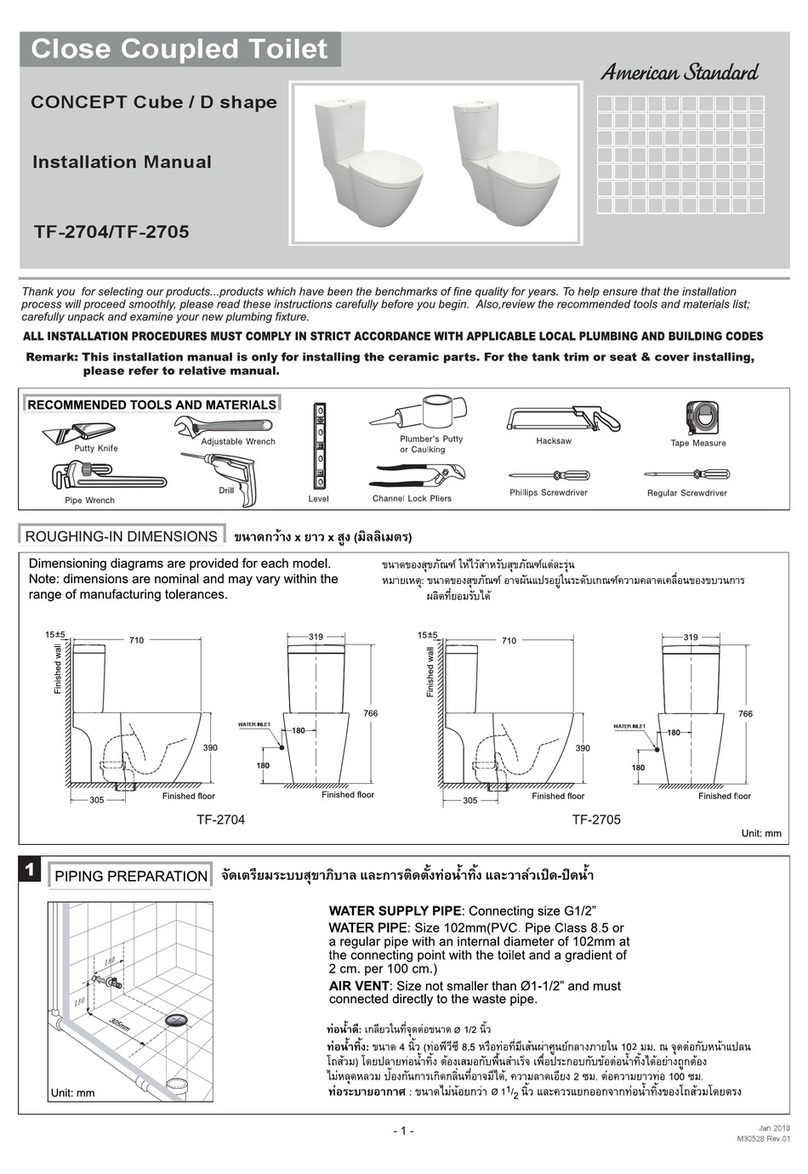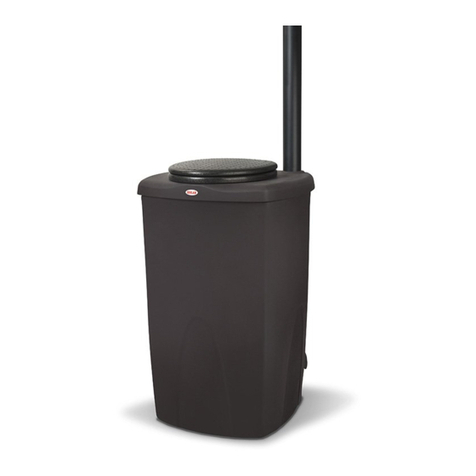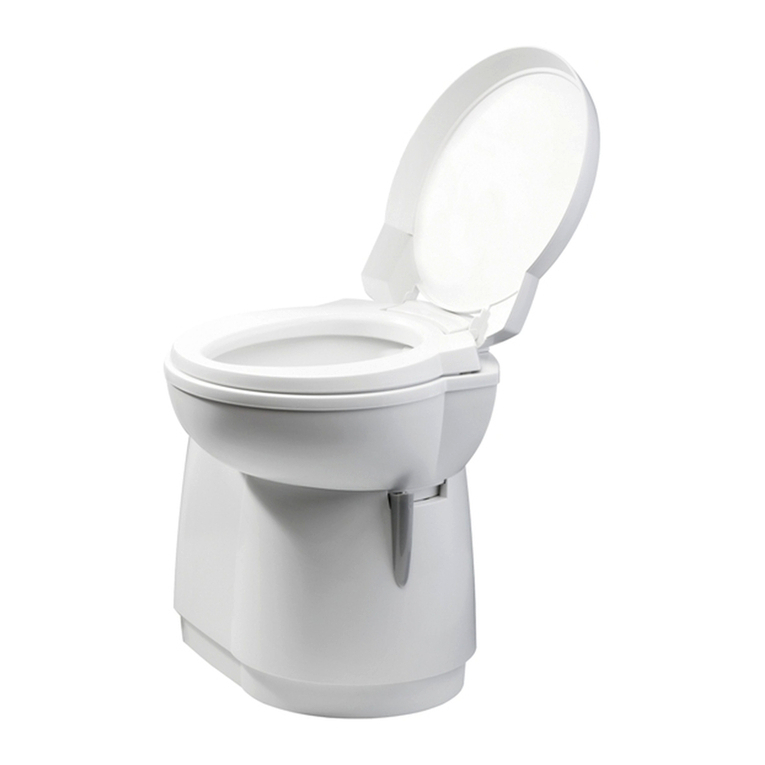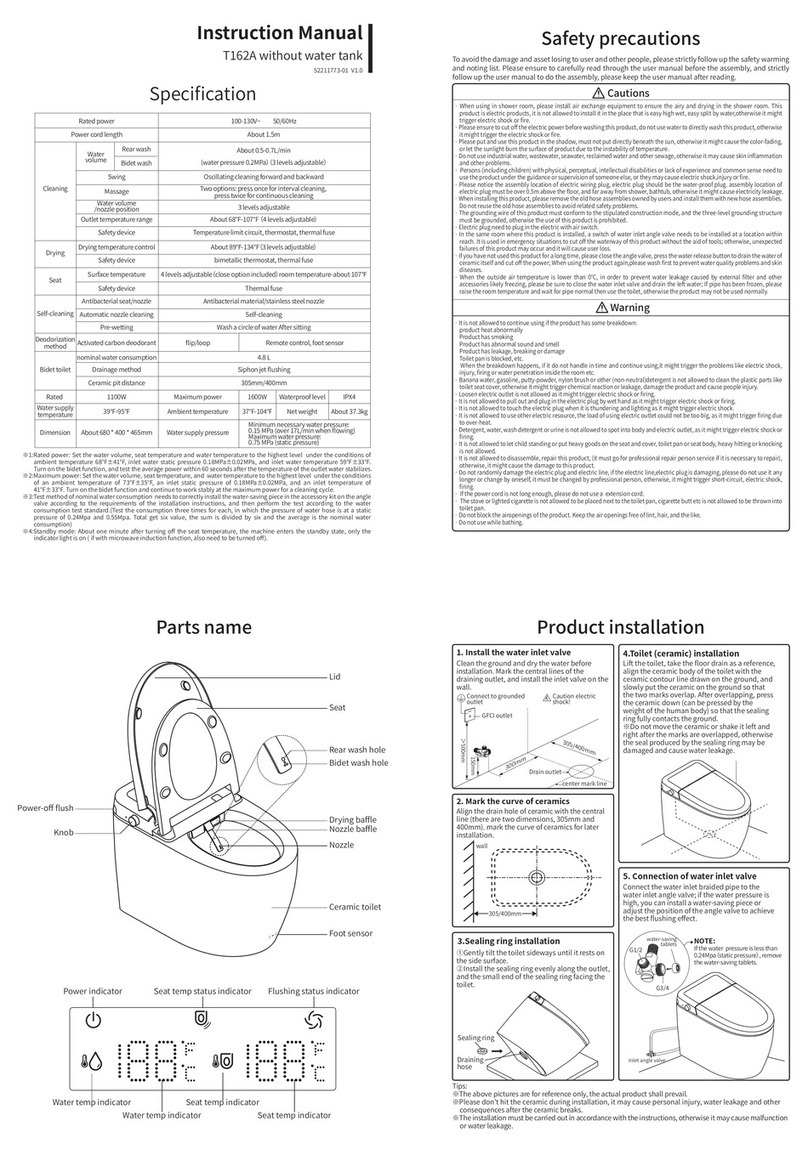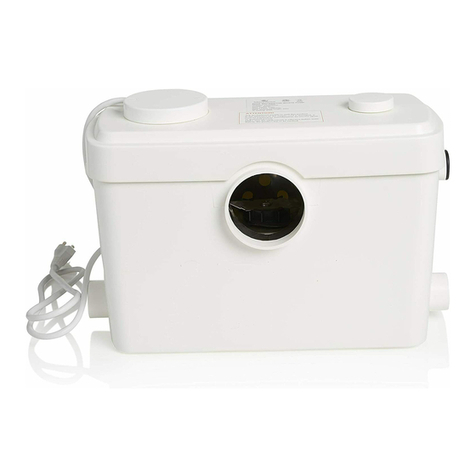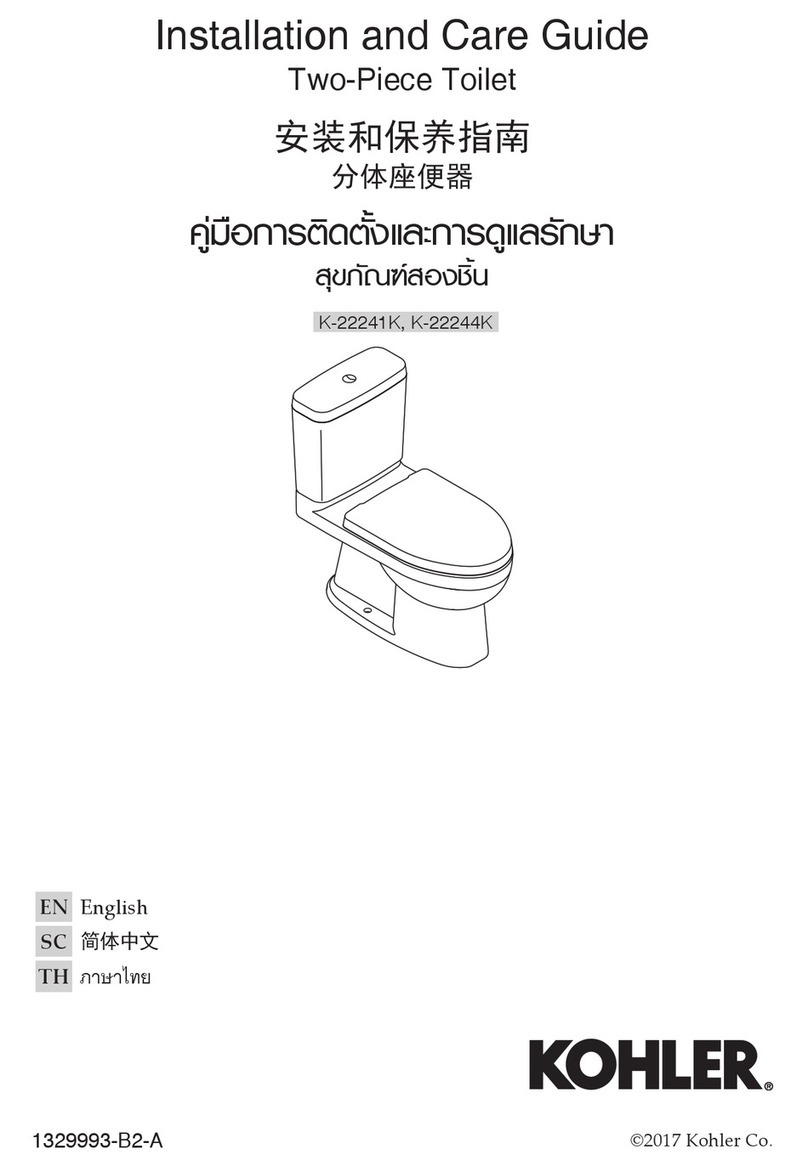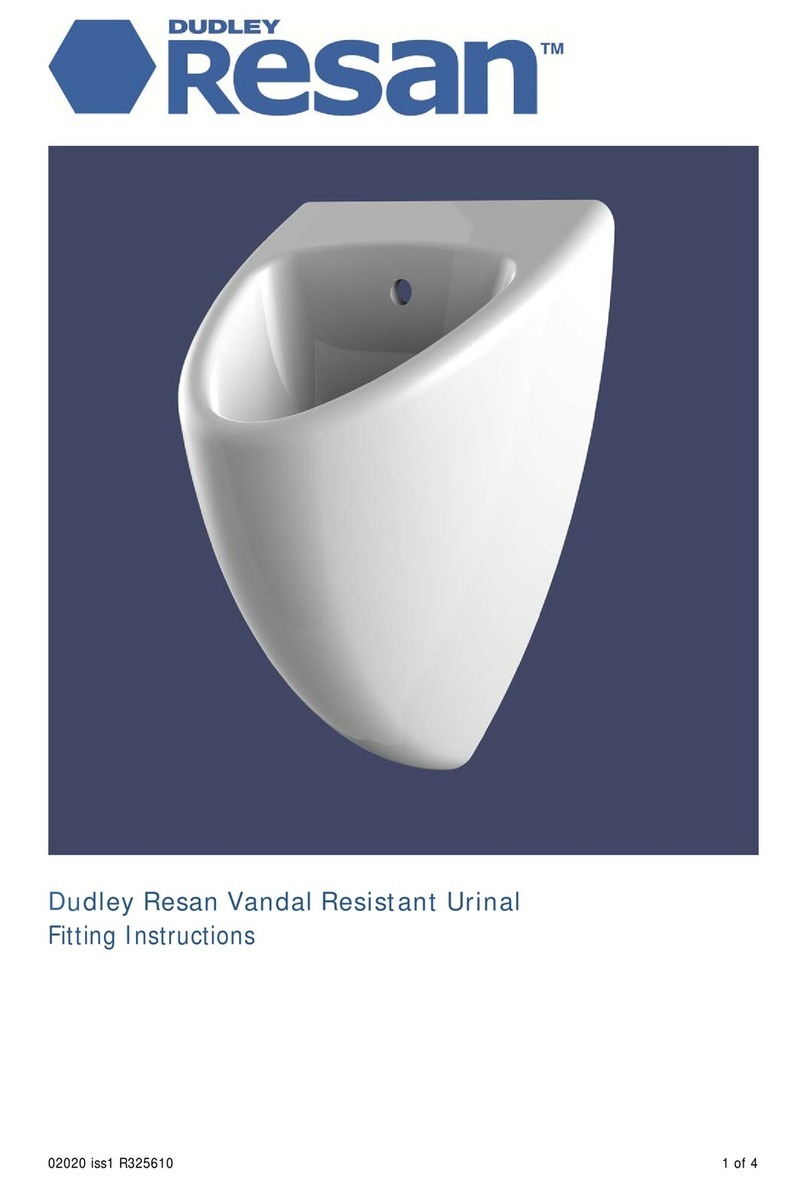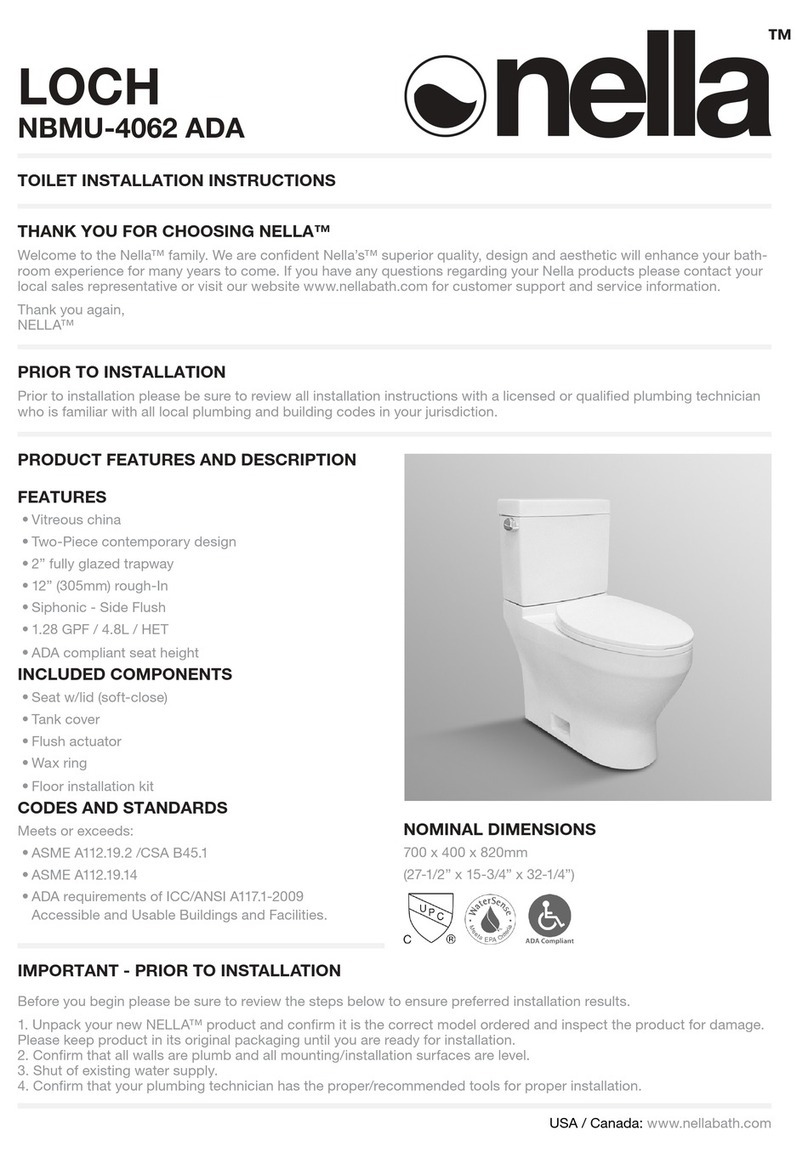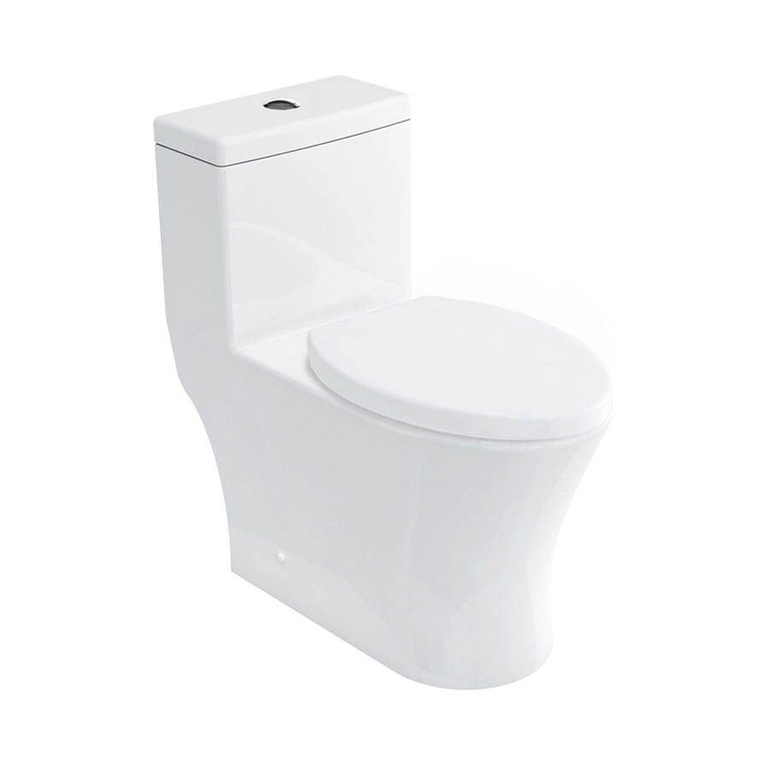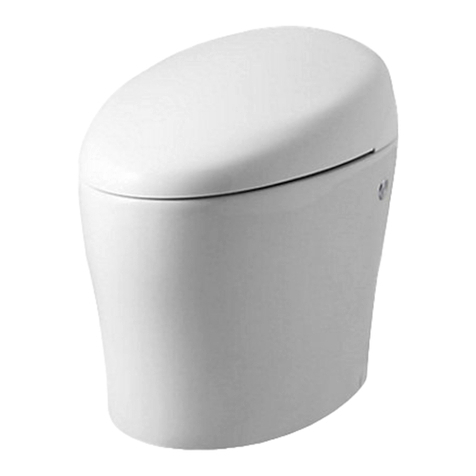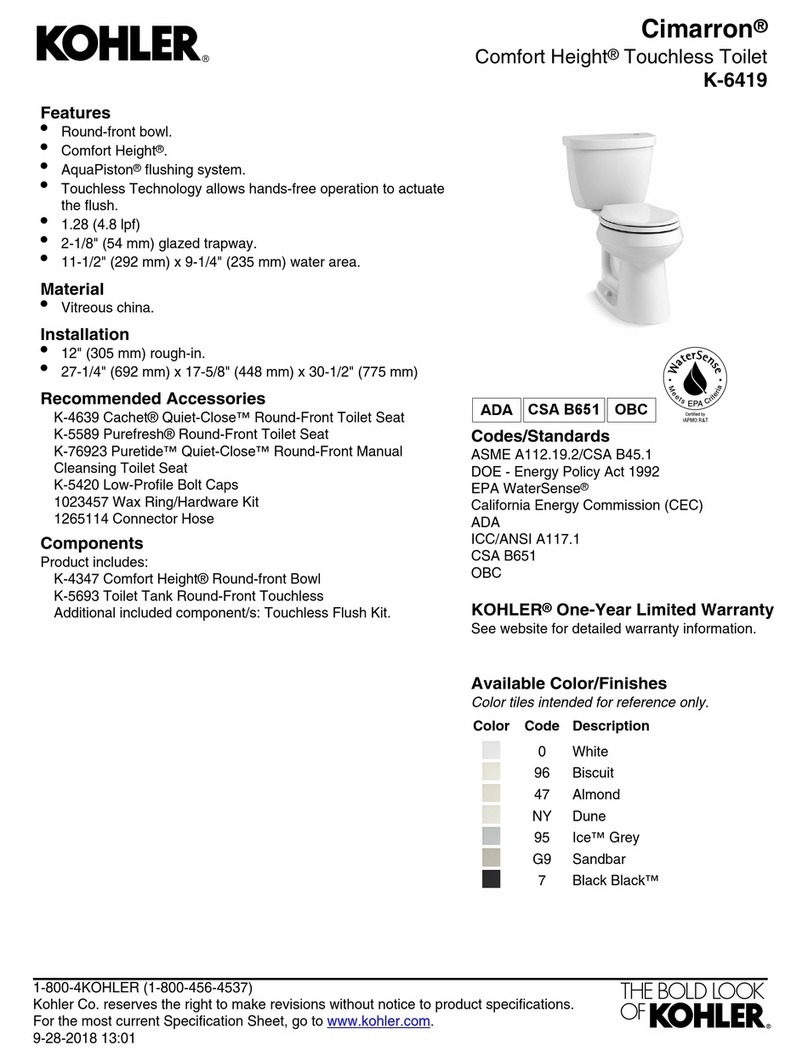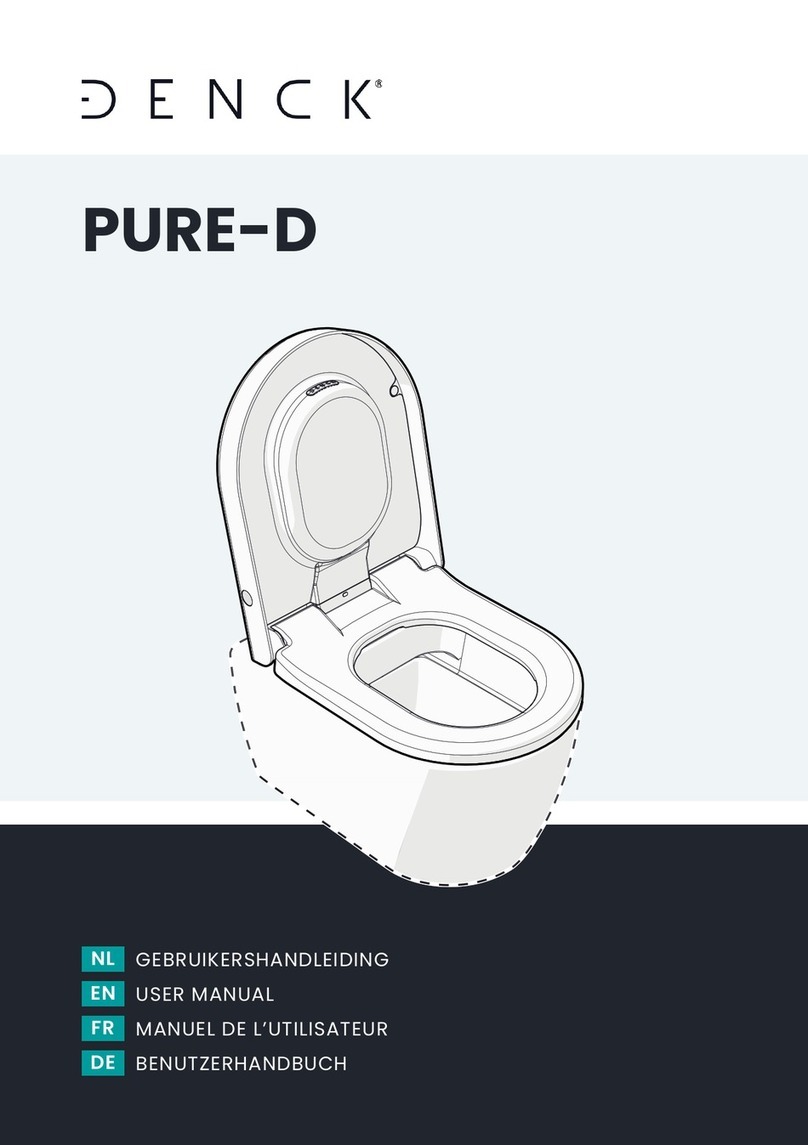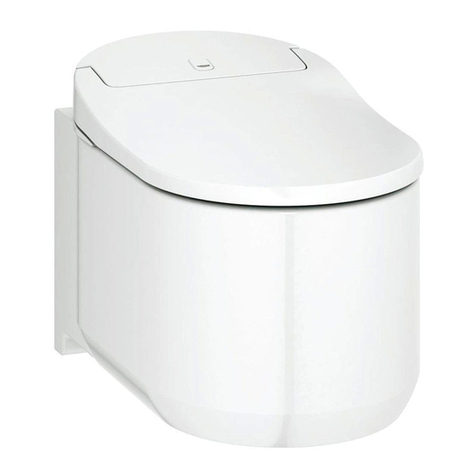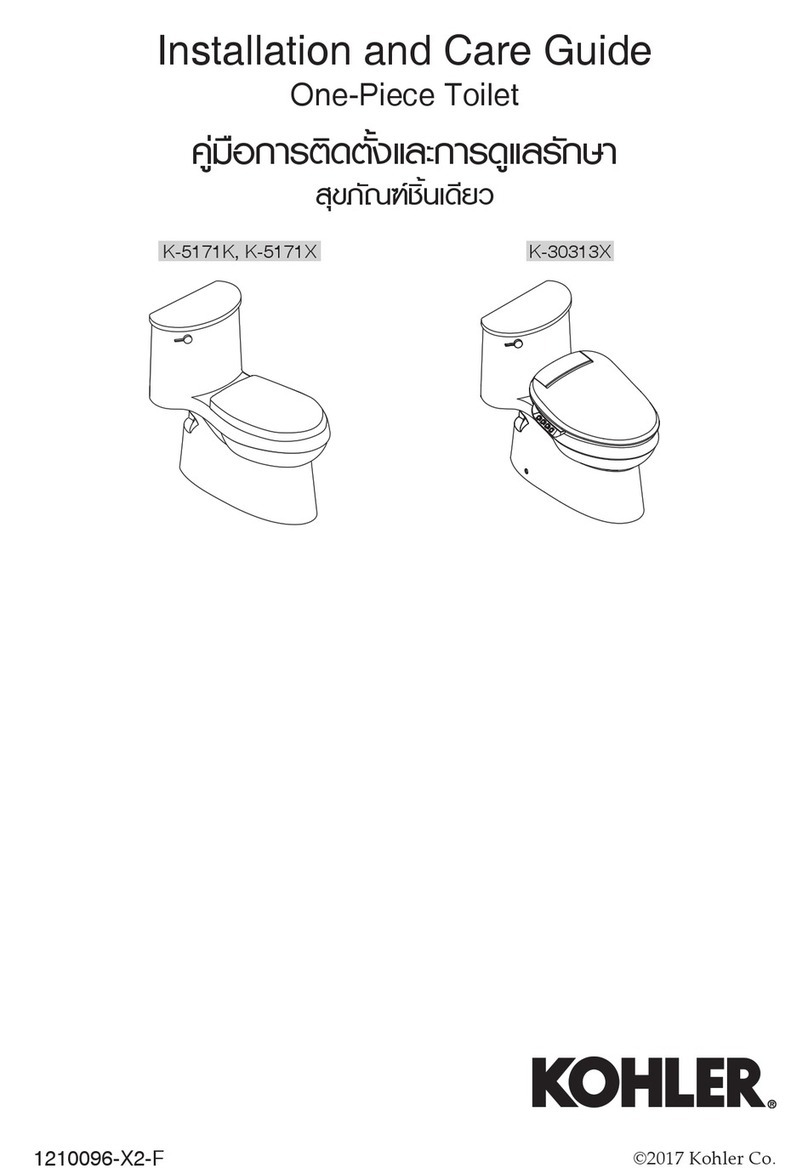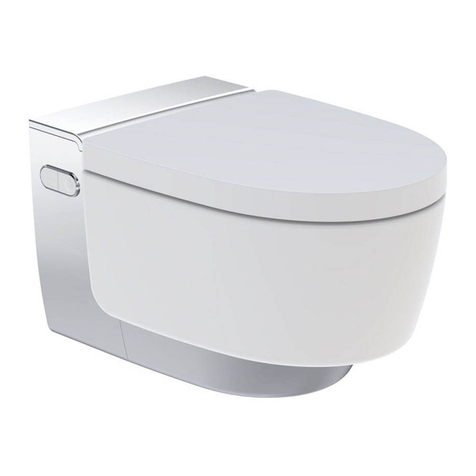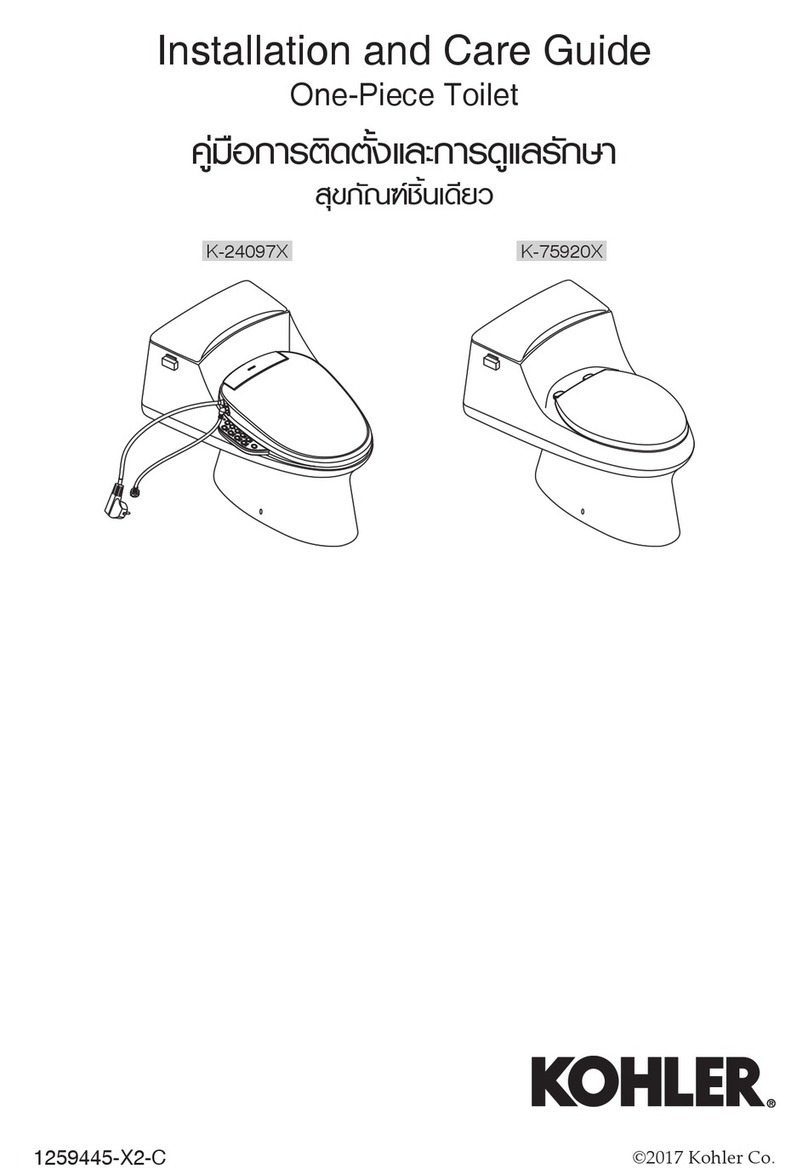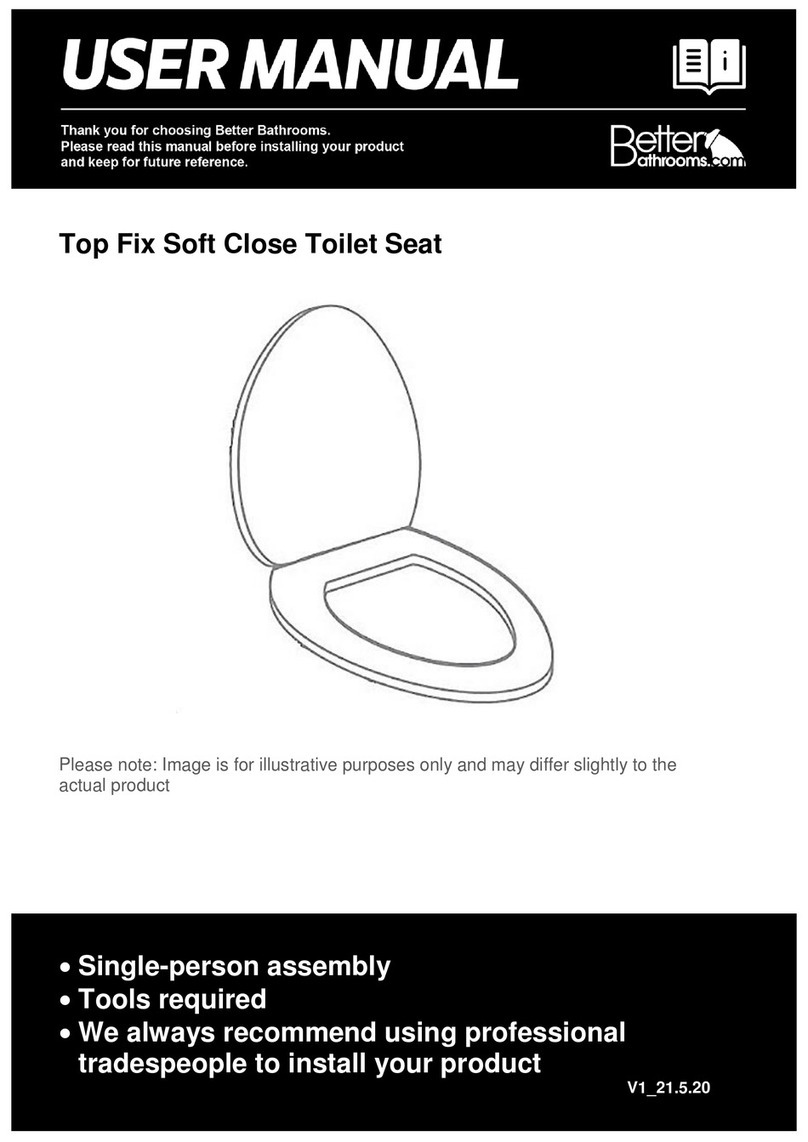
12019 iss1 R325609 3 of 4
Floor & Wall Preparation
1. Ensure that the floor where the WC pan is to be fitted is level, free from protrusions and
structurally capable of supporting its 60kg weight.
2. Ensure that the adjoining wall is vertical, flat and free from protrusions and debris.
3. Affix the paper drilling template to the wall using masking tape, ensuring that the bottom
datum is aligned with the surface of the floor and that it is crease free.
4. Using a pencil, mark the hole centres for the 4 off fixing positions, the flush inlet and waste
outlet
5. Remove the template and drill holes through the wall suitable to accept the following items:
a. 4 x M10 threaded fixing studs
b. 1 x 102mm or 4” waste pipe
c. 1 x flush pipe
6. Remove all debris from the holes.
Positioning the Cistern
1. The position of the cistern can have a dramatic effect on the performance of the flush:
a. Positioning the cistern too high could result in water splashing out of the pan.
b. Positioning the cistern too low could result in a weak flush and the pan may not clear.
c. When a cistern is used it should be positioned so that its height relative to the pan is such
that it provides an adequate flush.
2. In factory tests the pan gives a satisfactory flush when the cistern is set at a height of 720mm
above the ground, measured to the bottom face of the cistern.
3. To help eliminate splashing fit one of the five restrictors supplied into the flush pipe inlet
recess on the rear of the pan before fitting the flush pipe connector.
Note: Due to the rimless nature of the design it is impossible to completely eliminate all
splashing and some spotting may occur around the seat.
Fixing the Pan
Warning: The pan weighs 60kg and should only be fitted using recognised safe lifting
procedures.
Note: Fitting the basin requires two people: one to position and hold the basin in position
while the other secures it.
1. Slide into position taking care not to damage either the waste pipe or the fixing studs.
2. If required sealant can be used to eliminate any gaps between the pan and mating walls and
floor.
3. From the other side of the wall secure the pan into position using M10 washers and locknuts.
Ensure that there is enough thread to fully engage the locknut.
4. Push the inlet pipe through the wall and into the water inlet connector before fitting to the
cistern.
5. Connect the waste pipe as required
Commissioning for Use
1. Once the full installation complete check the system for leaks.
